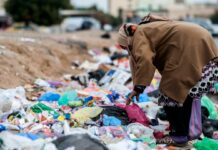The interior regions of Tunisia have suffered from marginalization and inequality in social and economic development since the Zine El Abidine Ben Ali regime, and are still facing this regional discrimination through the high level of unemployment, the deterioration of health and education services, and the lack of operational institutions and public utilities, in the absence of a will A strong policy to change this reality and establish the principle of equality between parties and groups.
According to a report published by the National Institute of Statistics, 3 regions in Tunisia monopolize nearly three-quarters of the wealth, namely Greater Tunisia with 35.9 percent, the center-east with 23.8 percent and the north-east with 13.5 percent.
This report revealed that the annual per capita GDP amounted to 7,943 dinars at the national level, reaching 11,780 dinars in Greater Tunis, compared to an estimated poverty rate of 3 percent. Rural areas where the poverty rate is 30 percent.
Structural Factors
In this context, sociology researcher Fouad Ghorbal says, “The problem is that the development model has not been changed, and since the revolution we have been living without a development model or a clear economic vision. Indifference to developing serious solutions to major sectoral problems (transportation, education, health, employment).
Our speaker added, “The state forgot that it had a key role in modifying and creating opportunities for citizens, and continued to work with the same laws and visions of the old system, and did not take the initiative to change the legal arrangements or reform the Tunisian administration, to facilitate work and create new opportunities.
He continued, “The development model is linked to the political decision. Successive governments since the revolution do not have any project. Their task was only to manage the existing, through managing misery and managing poverty, without developing a clear political plan or vision,” as he put it.
According to World Bank data in 2014, 85 percent of the gross domestic product and more than half of Tunisia’s population are concentrated near the three most populous cities, Tunis, Sfax and Sousse, as well as the general headquarters of about 90 percent of companies operating in the industrial sector. Only a tenth of the foreign companies operating in Tunisia are located in the country’s interior, according to the Malcolm Kerr-Carnegie Middle East Center.
There are other factors considered by Gherbal as historical, dating back to the colonial policy that worked to empty and plunder the interior regions, which was the source of wealth for export abroad, which caused the establishment of an export infrastructure concentrated in the coastal regions, because the colonial economy is an “économie extravertie” economy.
Marginalization..Create Smuggling
In the absence of the state, the interior regions have become dependent on themselves through the smuggling system. Since the nineties, these regions have resorted to the parallel economy to create a kind of spontaneous development “développement spontanée,” in order to provide job opportunities.
But if we use the micro-économique approach, we notice that the coastal areas in turn suffer from inequality within the same state, and these cities have become unincorporated due to the difficult economic conditions in the country, according to the sociologist Gherbal, noting that these cities, in turn, demand social justice. .
Cigarettes are among the most smuggled goods in Tunisia. In the first eight months of 2019, the value of seized cigarettes was estimated at 18 million dinars. Cigarette smuggling is 40 percent of commercial transactions within the framework of parallel trade, and Medenine and Tataouine are the first places in terms of the proportion of seizures. 70 percent, according to 2019 statistics.
The Middle East report, titled “Tunisia’s Disrupted Transition: Financial Corruption and Regional Incitements,” stated that the country remained divided on the economic and social level, similar to the division of the map during the legislative and presidential elections in 2014. The majority of medium and large projects are located in the capital and coastal regions, while part Of citizens in the interior regions (southeast, central and western regions) to smuggle with Algeria and Libya, and getting work and access to public facilities is still unfair and largely unfair between the two parts of the same country.
“Shadow men” and business owners have benefited from these political consultations and have begun to move the threads of the political game behind the scenes, in defense of their economic interests, since the fall of the authoritarian regime that restricted profitable deals to the circles of narrow confidants, financial corruption has spread, benefiting from the large number of markets, according to the same report. .
With the economic crisis that Tunisia is witnessing today, exacerbated by the Corona pandemic for two years throughout the Republic, the discussion about the disparity between the regions has become unfair, and it cannot be considered a valid tool for analyzing the Tunisian reality, because marginalization has become widespread in the entire Tunisian country.
Rifi-JDD











